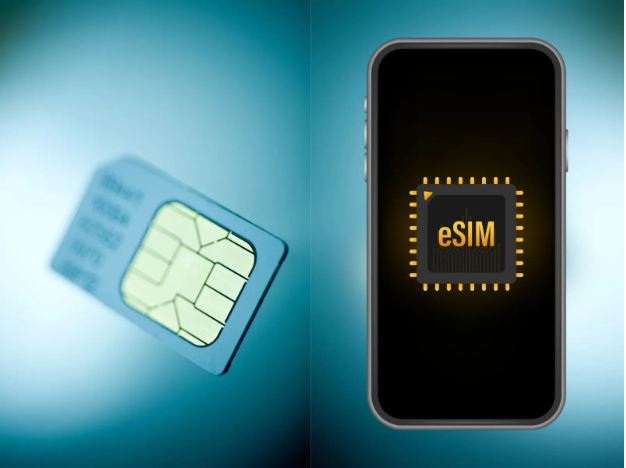Introduction
Traveling to Asia is an exciting experience! From beautiful beaches to tasty food, there’s so much to enjoy. But to stay connected, you’ll need a SIM card for your phone. That’s where the big question comes in: Should you use a travel eSIM or buy a local SIM? This guide will help you choose the best option while also discussing how Medicaid supports dental care, especially for children, and what it means to find a dentist that accepts Medicaid.
What Is a Travel eSIM?
An eSIM, or embedded SIM, is a digital SIM that works without a physical card. You download it directly to your phone through an app or QR code. Travel eSIMs are made for travelers and can work in many countries.
Pros of travel eSIM:
- Easy to set up before your trip.
- No need to visit a store.
- You can switch between plans quickly.
- Good for short-term travel in many countries.
Cons of travel eSIM:
- Sometimes more expensive than local SIMs.
- May have limited data or slower speeds in some areas.
What Is a Local SIM?
A local SIM is a regular SIM card you buy in the country you’re visiting. You can usually find them at airports, phone stores, or convenience shops.
Pros of local SIM:
- Often cheaper for long stays.
- Usually includes faster data and local call options.
- Better support from local networks.
Cons of local SIM:
- You must buy it after you arrive.
- You might need to show your passport.
- Setup can be confusing if you don’t speak the local language.
Where eSIM Works Best in Asia
Some Asian countries support travel eSIMs better than others. For example:
Japan: Great eSIM support, but local SIMs are cheap too.
Singapore: Very eSIM-friendly and easy to use.
Thailand: Local SIMs are cheap and widely available, but eSIMs are also growing in use.
Vietnam and Indonesia: eSIMs work, but local SIMs are usually cheaper and more reliable.
Always check if your phone is eSIM compatible before choosing.
Which One Is Better for You?
Choosing between a travel eSIM and a local SIM depends on your needs:
| Need | Best Option |
| Short trip (under 2 weeks) | Travel eSIM |
| Long trip (more than 2 weeks) | Local SIM |
| Traveling to many countries | Travel eSIM |
| Staying in one country | Local SIM |
| Don’t want to visit a store | Travel eSIM |
| Want cheaper data | Local SIM |
Bonus Tip: Using eSIM and Local SIM Together
Many newer phones allow dual SIM use. You can have A travel eSIM for data and a local SIM for calls. This gives you the best of both worlds. For example, use your eSIM from the U.S. for email and maps, and the local SIM for cheap calls and text.
How Dentist Medicaid Works While You Travel
Travelers may wonder, “What if I need to see a dentist while I’m abroad?” While Medicaid does not work outside the U.S., it’s still important to understand how dentist Medicaid works at home.
Medicaid is a government health insurance program for people with low income. It covers many health services, including dental care for children. Under a program called Early and Periodic Screening, Diagnostic, and Treatment (EPSDT), children on Medicaid must receive regular dental checkups.
That means if your child is on Medicaid, they can get:
- Cleanings
- Exams
- Fillings
- X-rays
- And more
It’s part of a full set of services to help kids grow up healthy.
Finding a Dentist That Accepts Medicaid
It’s important to find a dentist that accepts Medicaid before traveling. If your child needs care, you should:
Check online directories for Medicaid-approved dentists.
Call your state Medicaid office for a list of providers.
Ask your current dentist for recommendations.
When you’re traveling overseas, keep emergency dental care in mind. Although Medicaid won’t cover care in Asia, it’s good to have travel insurance that includes dental emergencies.
When to Use Travel Insurance Instead
If you’re visiting Asia and need dental care, your U.S. Medicaid will not help. Instead, look into travel insurance that includes dental benefits. Many policies will cover:
- Emergency toothache relief
- Broken teeth treatment
- Infections
This is a smart backup in case of an emergency.
Don’t Forget These Travel Tips!
Whether you choose an eSIM or local SIM, remember these helpful travel tips:
Download offline maps before you leave.
Keep your phone unlocked (check with your provider).
Have a backup internet source, like hotel Wi-Fi.
Know your phone’s APN settings in case you need to enter them manually.
Also, if you or your child rely on dentist Medicaid services, get any dental work done before your trip. This way, you’ll avoid surprises while away.
Conclusion: Choose What Works Best for You
So, travel eSIM vs local SIM in Asia—what’s the final answer? If you’re traveling short-term or to multiple countries, a travel eSIM is easy and fast. But if you’re staying in one place for a while and want to save money, a local SIM is your best bet.
Don’t forget to handle healthcare before you go. If your child is on Medicaid, make sure they see a dentist that accepts Medicaid for a checkup. Remember, Medicaid gives children full dental coverage through EPSDT, so use that benefit while at home.
In short: stay connected with the right SIM and stay healthy by planning ahead!
